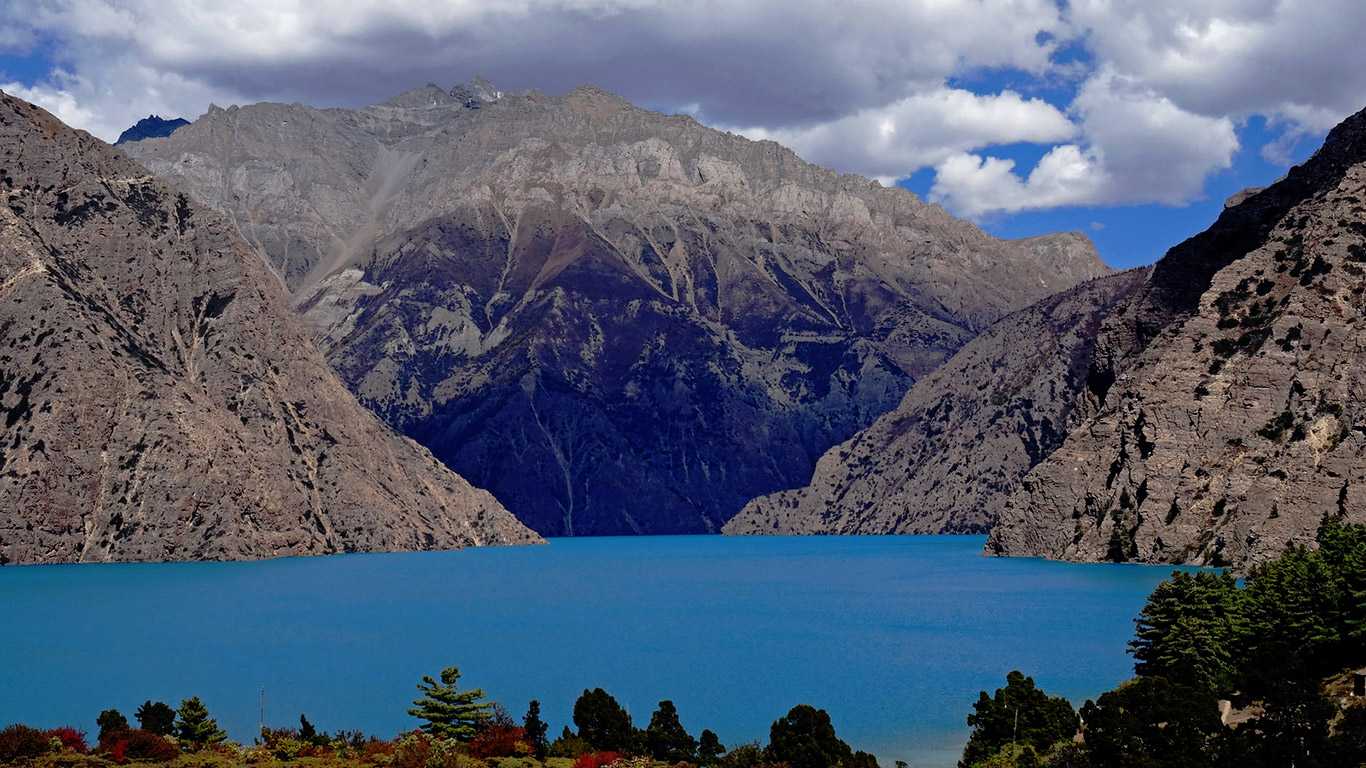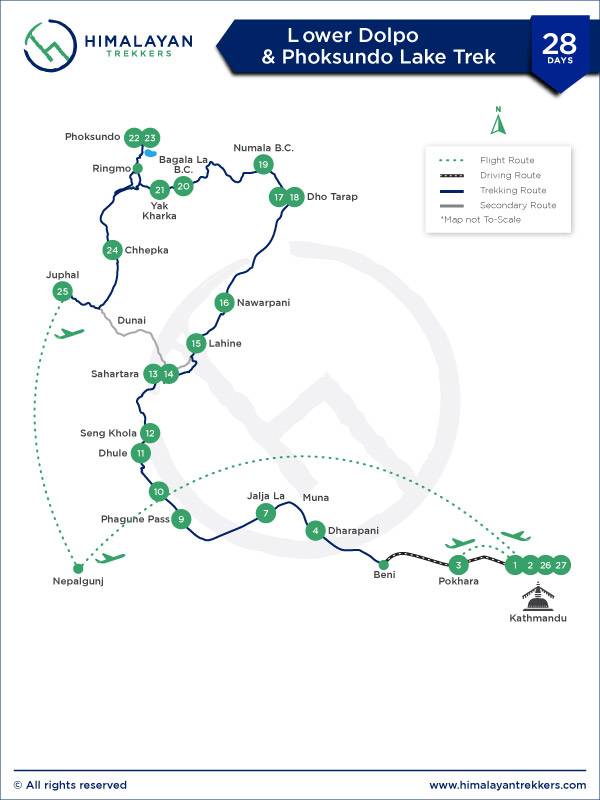Lower Dolpo Trek Overview
Lower Dolpo, until a few years back, was very much untouched and least accessed not much seen by outsiders. Dolpo region is located towards the northern side of Nepal and is one of the most sought-after beautiful and pristine land on earth.
Lower Dolpo retains its centuries-old traditions and customs. The people of this region have managed to maintain their original lifestyles and it seems as if time has stopped ticking for them. There are no to few signs of modernity and one can feel the simplicity and the ingenuity of the population.
Also home to one of the oldest religious sects of Tibet, the Bon-Po which was practiced before Buddhism. It is an indigenous religion of Tibet believed to be founded by Tonpa Shenrab and was introduced to the Himalayas of Nepal when people from Tibet migrated to Dolpo.
This region is greatly influenced by Tibetan culture, this religious sect is still very active. If one is to believe the legends, then Dolpo is said to be one of the “Hidden Valleys” created by Guru Rinpoche as a refuge for devout Buddhists who would want to escape during adverse times.
Journey in Lower Dolpo Trek passes through fascinating forests of pine, oak, rhododendron, and juniper through the untouched isolated land pass. Our route also has a variety of exotic flowers - some main attractions on the trip.
The mountain trails in this region are amazing and awe-inspiring, and the bodies of water are pristine and pure. On this trail, we will cross the Numala Pass at an altitude of 5,360 meters and also visit Lake Phoksundo, considered to be the brightest jewel of the Dolpo region.
The trip grade is strenuous and rugged but at the same time, it gives the trekker an experience to cherish. One is speechless with the abundance of natural beauty and the rich cultural experience Lower Dolpo Trek offers.
The trek starts at Beni and goes up to Phoksundo lake via Do Tarap and ends at Juphal where there is air connectivity. This is the same route that has been mentioned by Peter Matthiessen in his book “The Snow Leopard”. The trek is invariably described as a camping trek and is set up by Himalayan Trekkers' crew members.
Trek Highlights
- Walkthrough the ancient Trans-Himalayan Caravan route
- Hike through the world deepest lake Shey-Phoksundo Lake
- Least explored magical destinations
- Walk past through charming forests of pine, oak, rhododendron, and juniper
- Explore the “Jewel of Dolpo” - Phoksundo Lake
You might be interested in:













